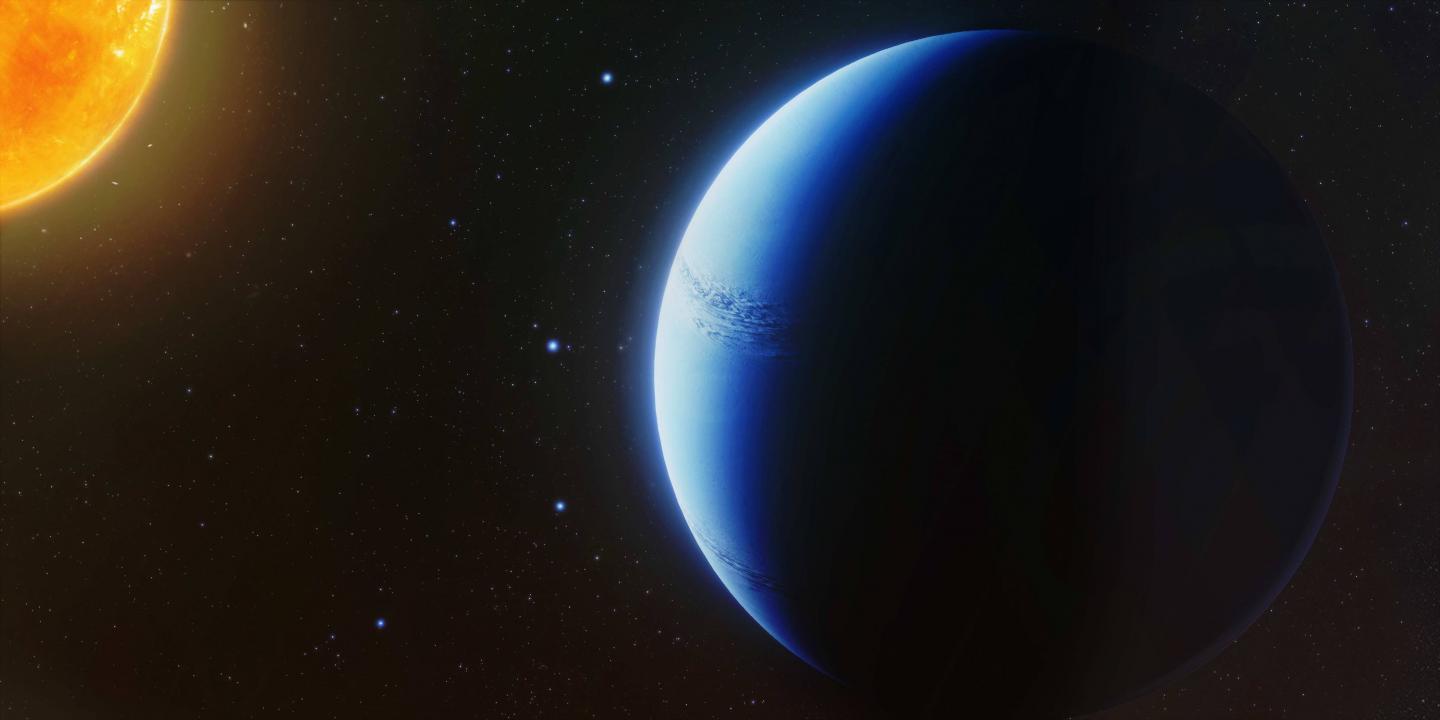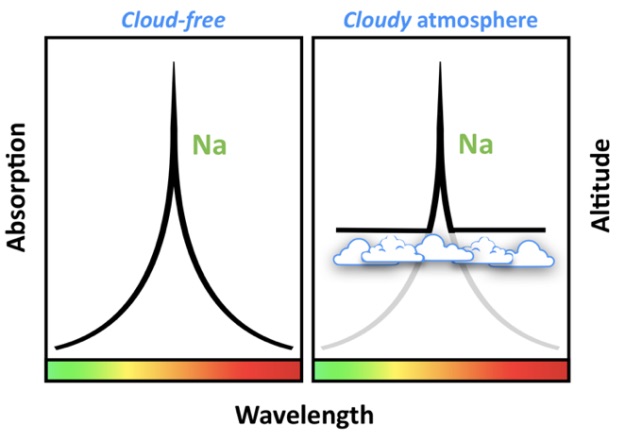This Alien World Has No Clouds, and That's Weird
The team, led by Nikolay Nikolov, an astronomer at the University of Exeter in the United Kingdom, detected this hot gas giant, known as WASP-96b, using the European Southern Observatory's Very Large Telescope in Chile. The team determined the atmospheric makeup of the exoplanet by studying it as it passed in front of its host star and measuring how the planet and its atmosphere affected light from the star.
A planet's atmospheric makeup influences the light that scientists can measure as it passes by its host star. This creates a spectrum, which is like a unique fingerprint. Typically, clouds obscure the light released by a planet and affect the spectrum that researchers can study from Earth, according to a statement released yesterday (May 7) by the University of Exeter. [The Biggest Mysteries of Saturn]

But for WASP-96b, an extremely clear signature for the element sodium was observed. Because clouds typically obscure such signatures, the clarity of this spectrum suggested that the planet's atmosphere has no clouds at all. With its his is the first evidence of an entirely cloudless planet and the first time a planet with such a clear sodium signature has been found, the researchers said. With its uniquely clear signature, WASP-96b is the first-ever cloudless planet discovered. Being the first of its kind, the exoplanet is now considered "a benchmark for characterization," Nikolov said in the statement.

This characterizing spectrum appears in the shape of a camping tent. This uncommon and easy-to-identify shape had never been seen before "because the characteristic 'tent-shaped' profile can only be produced deep in the atmosphere," Nikolov said. He added that for most planets, clouds get in the way, making this shape difficult to discern.
Aside from having an unusually cloudless, sodium-rich atmosphere, WASP-96b is extremely hot, at 1,300 kelvins (1,900 degrees Fahrenheit, or 1,000 degrees Celsius), and extremely large — 20 percent larger than Jupiter. The planet's mass is similar to Saturn's, so researchers classify the alien world as a "hot Saturn."
In addition, the sodium levels in WASP-96b's atmosphere are similar to those found throughout our solar system. Sodium is the seventh most abundant element in the universe, and for a long time, scientists have thought that large gas giants had sodium-rich atmospheres, according to the statement. But until now, such clear evidence to support this idea has not existed, so the observance of WASP-96b solidifies scientists' understanding of gas giants.
Because of WASP-96b's cloudless skies, studying the exoplanet will provide researchers with a "unique opportunity to determine the abundances of other molecules, such as water, carbon monoxide and carbon dioxide, with future observations," Ernst de Mooij,a researcher at Dublin City University and a co-author of a new study describing the findings, said in the statement.
Sign up for the Live Science daily newsletter now
Get the world’s most fascinating discoveries delivered straight to your inbox.
So, by identifying the signatures of other molecules using telescopes like Hubble and the upcoming James Webb Space Telescope, scientists can gain a better understanding of planets both within and outside our solar system, the researchers said.
The new work was detailed yesterday (May 7) in the journal Nature.
Email Chelsea Gohd at cgohd@space.com or follow her @chelsea_gohd. Follow us @Spacedotcom, Facebook and Google+. Original article on Space.com.
Chelsea Gohd joined Space.com as an intern in the summer of 2018 and returned as a Staff Writer in 2019. After receiving a B.S. in Public Health, she worked as a science communicator at the American Museum of Natural History. Chelsea has written for publications including Scientific American, Discover Magazine Blog, Astronomy Magazine, Live Science, All That is Interesting, AMNH Microbe Mondays blog, The Daily Targum and Roaring Earth. When not writing, reading or following the latest space and science discoveries, Chelsea is writing music, singing, playing guitar and performing with her band Foxanne (@foxannemusic). You can follow her on Twitter @chelsea_gohd.










